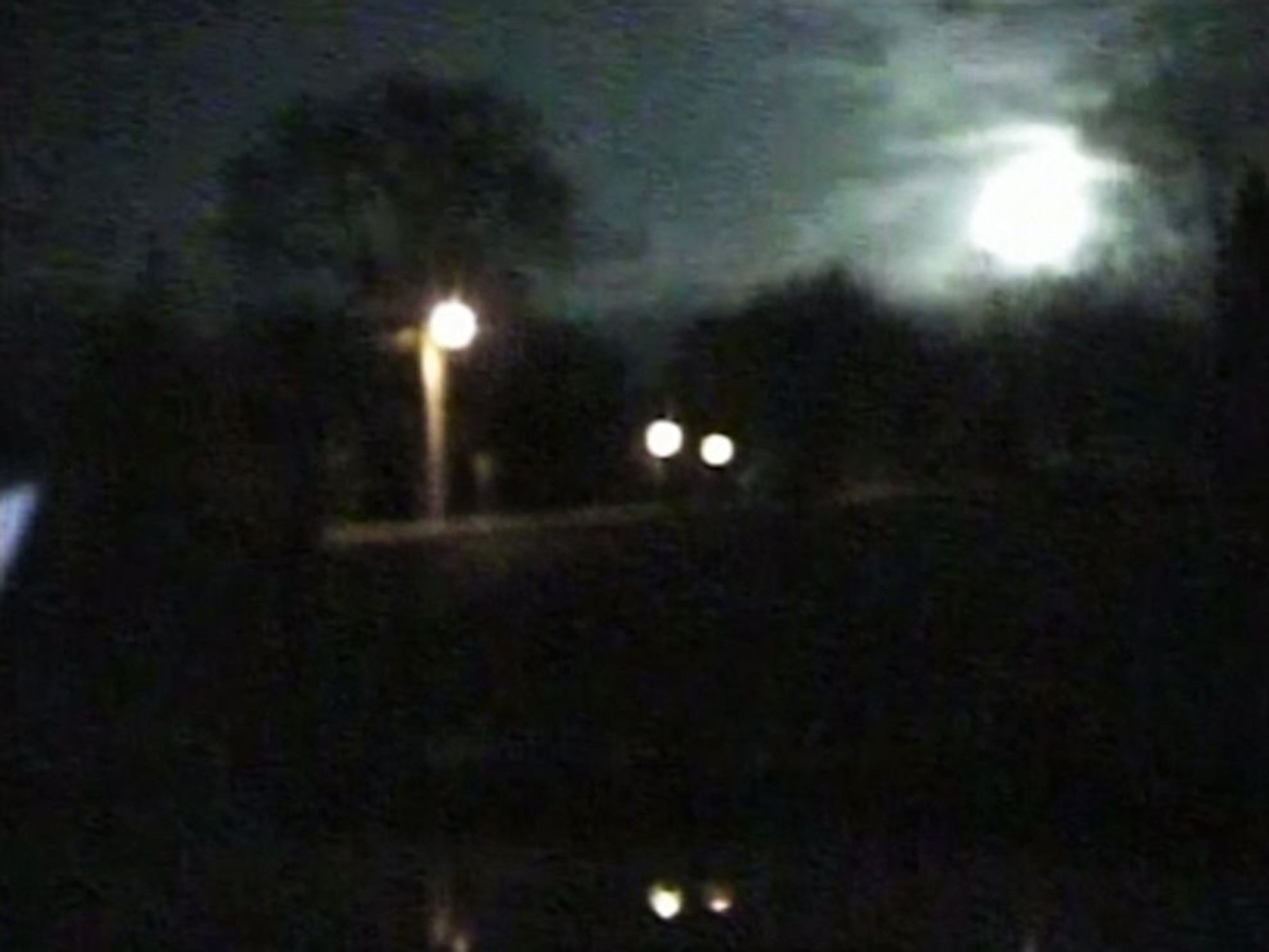
"Major," Green Meteor Lights Midwest Night Sky
Fireball rock likely landed in Wisconsin.
A large meteor blazed across the midwestern U.S. sky Wednesday night.
Igniting over Wisconsin, Iowa, Illinois, and Missouri around 10:15 p.m., local time, the fireball briefly turned night to green-tinged day and unleashed a sonic boom heard for hundreds of miles around.
Based on video of the fireball, astronomer Mark Hammergren thinks the meteoroid—the space rock that causes the meteor, or fireball—may have been up to six feet (1.8 meters) wide and weighed roughly a thousand pounds (453 kilograms) or more.
"One of the misconceptions about bright meteors is that they're due to very tiny objects," said Hammergren, of the Adler Planetarium in Chicago, who didn't catch the fireball sky show himself.
But "if something is bright enough to light up the sky like daytime and cause sonic booms throughout the entire area, it's big. It was major," he said. "If it was daytime, people would have undoubtedly seen smoke trails."
(See "A Hundred Years After Tunguska, Earth Not Ready for Meteors.")
Video: Meteor Over Midwest, April 14 (Via YouTube)
The fireball's greenish color came from a combination of the heating of oxygen around the meteoroid and the mix of minerals ignited as the rock enters Earth's atmosphere.
The color, though, gives no clue to the meteoroid's composition, Hammergren said. Determining a space rock's makeup is more complicated than, say, identifying a metal by holding it over a bunsen burner.
"People see the greenish color and say, Aha, that must be due to copper—I remember that from high school chemistry," he said. "That's not the case."
Fireball Not Part of Meteor Shower
The annual Lyrid meteor shower is scheduled to begin Friday and peak on April 22, but the midwestern fireball's timing is just a coincidence, Hammergren said. (Related: "Sky Show Tonight: Lyrids Kick Off Meteor Season" [2004].)
Meteorites—what meteoroids are called once they reach the ground—aren't associated with meteor showers, which usually result when the Earth passes through the dusty tail of a comet, he said. (However, that hasn't stopped scientists from theorizing that a meteor shower caused Ice Age extinctions.)
The comet debris that results in meteor showers "is thought to be quite weak, almost fluffy material, and it's usually not very big"—so it's generally incinerated before it reaches the ground, he explained.
Instead, the Wisconsin fireball was most likely a defector from our solar system's asteroid belt, the ring of space rocks that lies between the orbits of Mars and Jupiter, Hammergren said.
Meteoroids from the asteroid belt "come in fairly randomly, and they're distributed all over the surface of the Earth," he said.
"Most of them will fall into the ocean, because there's more ocean on the Earth. But they can come in any time, day or night."
Meteor Rock Landed in Wisconsin?
Based on radar images of the material shed by the meteor during its passage through the atmosphere, Hammergren thinks the bulk of the space rock landed somewhere in Wisconsin.
"It looks like it passed over Livingston [map] and continued southeast," he said.
(See pictures of major meteor craters on Earth.)
Before it hit the ground, the meteor would have fragmented into dozens or hundreds of pieces, each about the size of a football or smaller. No meteorite injures have been reported as of press time.
Meteorite hunters heading for Wisconsin shouldn't worry about approaching the solar system souvenirs, Hammergren added.
"The material they're made of is common rock forming minerals," he said. "There's nothing dangerous about them, nothing poisonous, nothing radioactive."
RELATED





